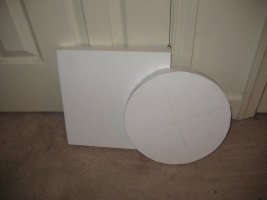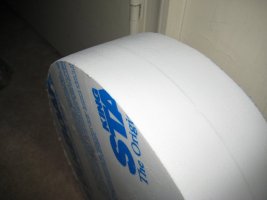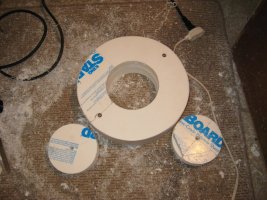Just adding a random tidbit to the thread...
Last weekend I filled a bunch of holes from the underside with a thickened batch of WEST epoxy (105 resin, 206 slow hardener, 406 filler). Thickened to about the consistency of mayonnaise, splooged into place with a throw-away syringe and captured with a bit of preservation tape to keep it from sagging/dripping while it set. Worked great.
When done, I had a fair amount of material left over and I just let it go off in the pot....
...and the next day, I had a nice hard/rigid/smooth disk that popped easily out of the pot.
If it had been the right diameter, it would have been perfect as the starting point for a winch pad.
So I called WEST and asked if there was any reason not to build a winch pad that way. Would it be strong enough? Would it handle compression and sheer loads?
They said yes. They recommended using both 404 and 406 fillers in a 50:50 mix (the 404 handles compression better), and they said I'd need to paint the resulting disk because the bare epoxy is not UV-stable, but... no, no reason not to do. They said they'd see no need to add anything else structural to the mix (e.g, a layer of fabric, whatever...)
So... I'm adding that option to my list of possibilities. It occurs to me that if I mixed up a batch in the right-size mold, and then set the mold in the right place on deck before it went off... not only would it produce a pad of the right diameter, it might even be the right angles (since the top surface would level, and the bottom surface would be the true 3D angle of the deck.) Flipped over and sanded, might work.
Yeah, my mind seems to have lots of time to wander while filling holes.
Bruce





